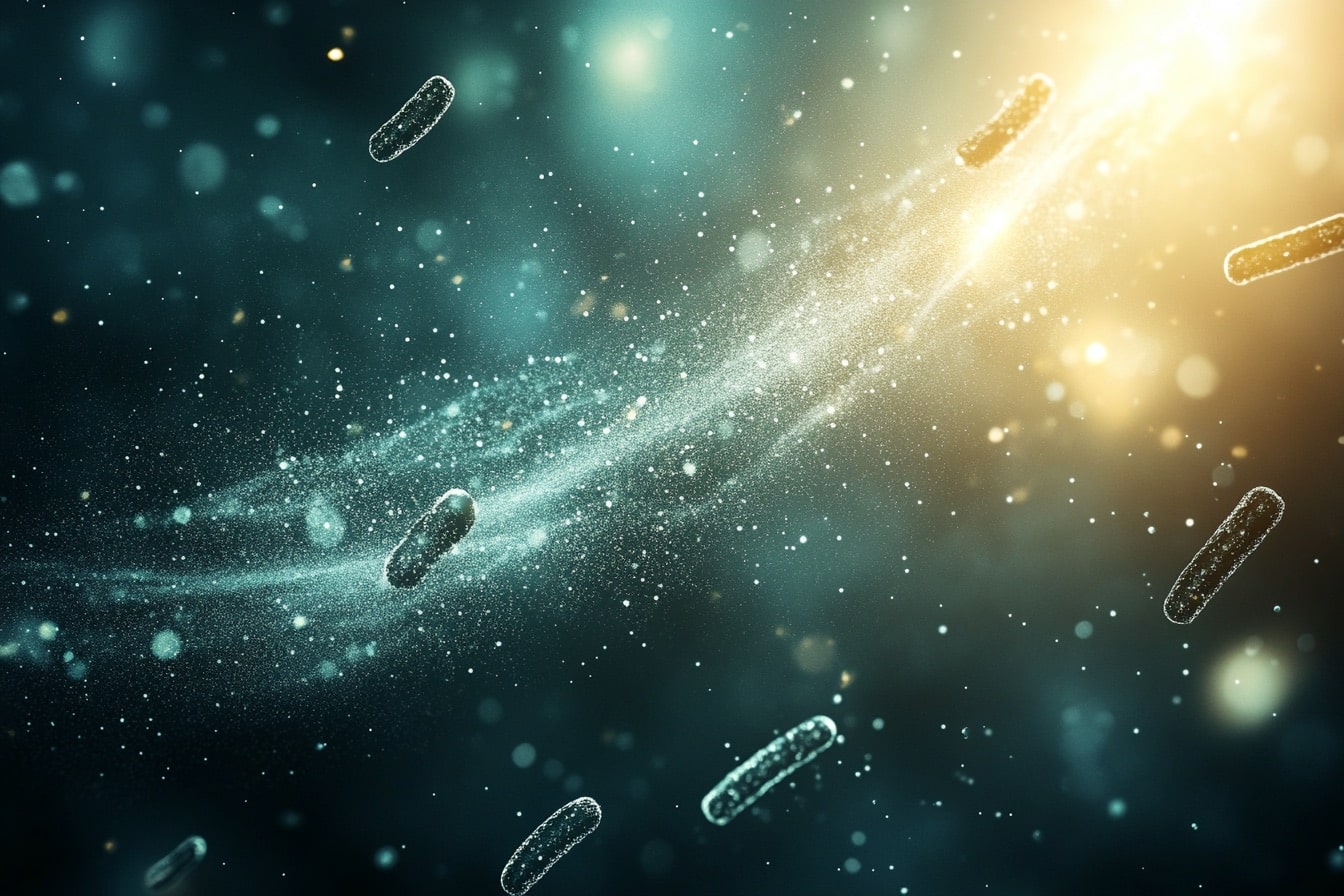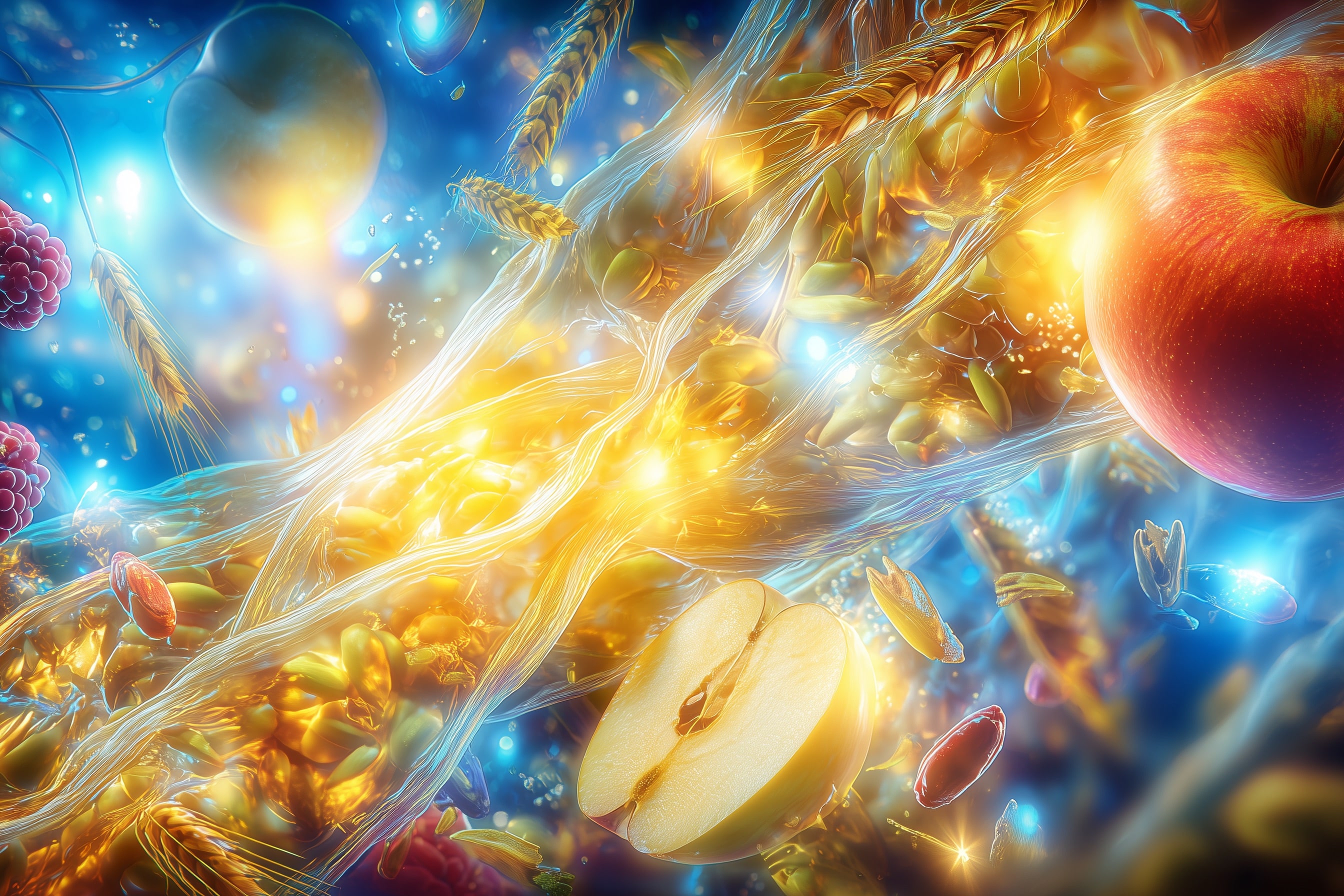What happens in the body when creatine meets your microbiome?
For decades, creatine was only considered a recommended dietary supplement for athletes, especially strength sports enthusiasts. However, the latest findings show that creatine has a wide range of effects. And our microbiome also plays a decisive role.
Creatine is a substance produced naturally in the body from the amino acids arginine, glycine and methionine in the liver, kidneys and pancreas. 95% of creatine is found in the skeletal muscles. As meat and fish contain the most creatine, vegetarians have lower levels. The body produces 1-2 g per day and releases about the same amount in the urine.
How does creatine work?
Creatine is a fantastic energy store: not only for the muscles, but also for the brain. It works quickly and easily by being enzymatically converted into phosphocreatine in the body, thereby influencing the energy balance. This is because the body contains the universal energy currency ATP (adenosine triphosphate). This molecule has three phosphate groups and releases energy when a phosphate group is split off.
Creatine ensures that it quickly transfers its phosphate group to the resulting ADP (adenosine diphosphate) and regenerates this back into ATP, which in turn is then available as an energy supplier.
To explain it with an image: An arrow is shot from a bow, and creatine simply provides a new arrow super-fast. The whole thing happens within milliseconds.
What effects does creatine have?
As creatine ensures that energy can be replenished very quickly, this leads to increases in training and thus to measurable increases in muscle strength and an increase in average performance.
It causes more water to be stored in the muscles by bringing more ions into the cell. This increased particle density must be balanced out by increased water retention. This triggers growth stimuli in the muscle and is therefore a very positive effect, which is noticeable in a slight increase in weight, although this is not based on fat. Depending on creatine intake and body weight, the weight gain can amount to 1-3 kg and is lost again around 4-6 weeks after creatine is discontinued.
As the brain uses a lot of ATP, creatine can improve short-term memory, increase mental presence and alertness and possibly also reduce depressive symptoms by quickly recharging the energy supplier. It also appears to prevent neurodegenerative diseases such as Parkinson’s.
What interactions are there with the microbiome?
Does creatine influence the microbiome? New knowledge on creatine-microbiome interactions reveals exciting insights.
Strengthening the intestinal barrier
Creatine appears to have a positive effect on maintaining the intestinal barrier by supplying the intestinal epithelial cells, i.e. the intestinal walls, with energy and thus stabilizing them. Weak intestinal walls lead to contamination of the body with intestinal bacteria, to inflammation and thus to the dreaded “leaky gut” syndrome. Conversely, low creatine levels in the gut are a sign of impending inflammatory bowel disease.
Protection during cancer radiotherapy
In animal experiments, creatine proved to be a protective factor against radiation stress. The microbiome was altered and the growth of certain bifidobacteria was promoted by a certain diet – time-limited feeding. This led to an increased concentration of creatine in the intestine. These bacteria probably inhibited the degradation of creatine by other microorganisms.
The increased availability of creatine supported the rapid restoration of ATP in the intestinal epithelial cells, thereby activating the cell’s own protective mechanisms. In this way, radiation-induced cell death (ferroptosis) could be inhibited. In future, this mechanism could contribute to the protection of the intestinal mucosa during cancer treatment, where mucosal damage and increased intestinal permeability are common side effects.
Positive influence on neurodegenerative diseases
Experiments with certain probiotic strains, such as Bifidobacterium animalis subsp. lactis, have shown that these can increase creatine availability and positively influence neurological functions by altering the intestinal microbiota. This could have positive effects on the prevention or treatment of Parkinson’s disease. It has long been suspected that the gut microbiome plays a key role in Parkinson’s disease, as it has a direct connection to the brain via the gut-brain axis. (register here: our free webinar on the gut-brain axis)
The gut microbiome can influence the development of Parkinson’s disease in several ways. For example, bacteria can produce certain substances that enter the central nervous system and promote (harmful bacteria) or inhibit (good bacteria) inflammatory processes in the neurons. The production of SCFAs (short-chain fatty acids) such as butyrate can also have an anti-inflammatory effect. In contrast, increased intestinal permeability can in turn promote Parkinson’s disease.
There are therefore both positive and negative interactions between the microbiome and Parkinson’s. The decisive factor is that a healthy lifestyle promotes the positive bacteria. Preclinical studies have shown that certain probiotic bacteria increase creatine levels, improve neurological function and lead to a reduction in inflammatory processes, which could ultimately help to prevent Parkinson’s disease.
Better bone health
The microbiome can promote calcium absorption in the gut through the formation of SCFAs and contribute to increased creatine availability. Preclinical studies show that creatine can indirectly increase bone density through muscle building and additionally positively influence osteoblasts, which are responsible for bone formation.
Increased availability of creatine
A microbiome that is dominated by harmful bacteria leads to an increased breakdown of creatine and thus to reduced availability. This effect increases with age. This could be partly responsible for the fact that lower creatine availability and associated muscle weakness are increasingly observed in old age. Sarcopenia, the loss of muscle mass and function in old age, significantly impairs the health and quality of life of older people.

Conversely, “good” bacteria can increase the availability of creatine and thus support the effects of creatine supplementation. It seems likely that probiotics and creatine will be combined therapeutically in the future to treat age-related sarcopenia more effectively. Prebiotics such as inulin, i.e. dietary fibers that promote the growth of beneficial bacteria, can also improve creatine absorption and effect via healthy intestinal flora.
Mutual influence
Current research results thus paint a picture in which creatine and the microbiome influence each other:
The microbiome can increase the availability and effect of creatine, while conversely creatine improves the intestinal flora and thus overall health by strengthening the intestinal barrier and via metabolic effects.
Practical relevance
What does this mean and how can this knowledge be implemented in the best possible way?
Supplementing with creatine between three and five grams a day is absolutely harmless to health and has a variety of positive effects. Sarcopenia begins gradually from around the age of 30 and becomes clinically relevant from 50+. For this reason, it is important not only to ensure a sufficient supply of creatine with increasing age, but also to maintain a healthy microbiome so that its beneficial effect on creatine utilization is not lost.
It is almost always worthwhile to take care of your microbiome. It plays a significant role in almost all areas of life and thus significantly influences our health and well-being.
Creatine is therefore no longer just a supplement for bodybuilders, but an essential substance that, together with a healthy microbiome, protects our muscles, prevents potential neurodegenerative diseases, improves brain performance and stabilizes the intestinal walls.
Creatine therefore has a positive effect on the microbiome and vice versa.
Bibliography
Avgerinos KI, Spyrou N, Bougioukas KI, Kapogiannis D. Effects of creatine supplementation on cognitive function of healthy individuals: A systematic review of randomized controlled trials. Exp Gerontol. 2018 Jul 15;108:166-173.
Bonilla, D. A., et al (2021). Metabolic Basis of Creatine in Health and Disease: A Bioinformatics-Assisted Review. Nutrients, 13(4), 1238.
He Y. et al. (2025). Creatine-mediated ferroptosis inhibition is involved in the intestinal radioprotection of daytime-restricted feeding. Gut Microbes, 17 (1), 2489072.
Lempert K.D. (2019). Probiotics and CKD Progression: Are Creatinine-Based Estimates of GFR Applicable? American Journal of Kidney Diseases, 74 (4), 429-431.
Peng Z. et al. (2023). Creatine supplementation enhances anti-tumor immunity by promoting adenosine triphosphate production in macrophages. Frontiers in Immunology, 14, 1176956.
Roberts M.D. & Rawson E.S. (2021). Metabolic Basis of Creatine in Health and Disease: A Bioinformatics-Assisted Review. Nutrients, 13 (4), 1238.
Schimmel P. et al. (2023). The infant gut microbiota: in pursuit of non-protein nitrogen. Gut Microbes, 15 (1), 2211917.
Wallimann T. et al (2021). Creatine Supplementation for Patients with Inflammatory Bowel Diseases: A Scientific Rationale for a Clinical Trial. Nutrients, 13 (5), 1429.
Zhang Z. et al. (2024). Bifidobacterium animalis Probio-M8 improves sarcopenia physical performance by mitigating creatine restrictions imposed by microbial metabolites. npj Biofilms and Microbiomes, 10, 144.




